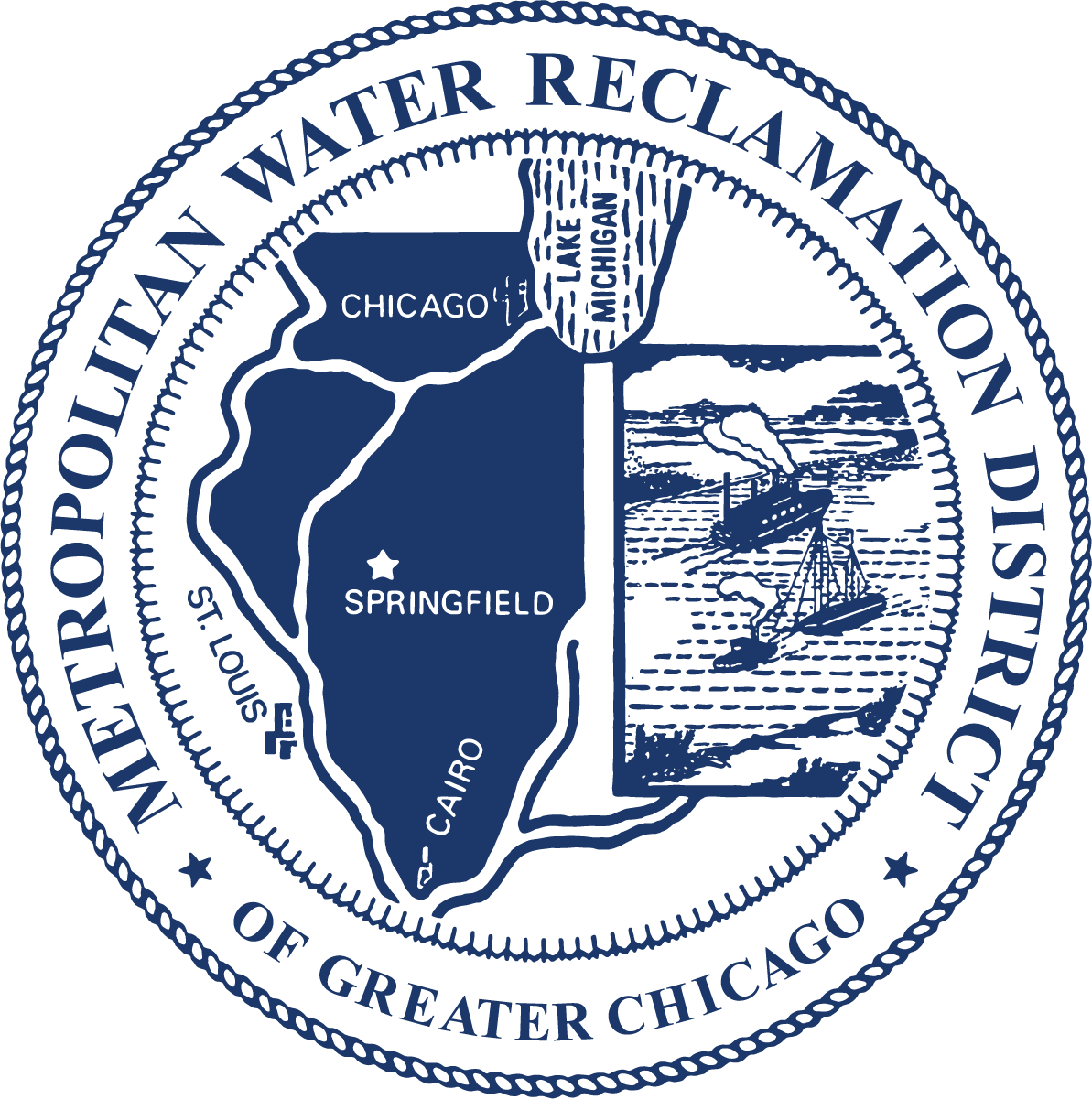What Happens at a Water Reclamation Plant?
The MWRD’s seven water reclamation plants (WRPs) transform the Chicago area’s wastewater into clean water and recover resources to be reused.
Sewers
Wastewater from homes and businesses first goes into local sewers owned and maintained by municipalities. These local sewers flow into larger MWRD intercepting sewers, which transport the wastewater to our seven WRPs. Our 560 miles of intercepting sewers are designed to flow downhill by gravity, with a couple of exceptions where pumping stations help keep the water moving.
Pumps
Wastewater enters the WRP at sewer level, 40 to 50 feet below ground. The water needs to be pumped to the surface to be cleaned. Before the water enters the pumps, it flows through screens that remove large debris that could damage the pumps. Once the water is pumped to the surface it flows through the rest of the plant like a river, by gravity.

Primary treatment
In primary treatment 60 to 80 percent of the solids in the water are removed.
- Aerated grit tanks allow rocks, sand and gravel to sink to the bottom. This material is removed through an opening in the bottom of the tank and goes to a landfill for disposal.
- In primary settling tanks, the water is allowed to sit still, so fats, oils, grease and plastic float to the top and are skimmed off, collected and sent to a landfill for disposal. Meanwhile, organic solids sink to the bottom of the tank and are sent to a separate solids process.
Grit tanks, at left, and a primary settling tank at the O'Brien WRP.
Secondary treatment
The water flows from primary settling tanks to secondary aeration tanks, where a biological process cleans it further. Air bubbles are pumped through the water increasing dissolved oxygen. This encourages naturally occurring beneficial bacteria to become active and consume the remaining solids in the water.

Once the pollutants have been consumed, the bacteria goes dormant and clumps together. In final settling tanks, these clumps are allowed to sink to the bottom and the top inch of clean water flows out. About 95 percent of the bacteria is sent back to the aeration tanks to work again and the remaining 5 percent is removed to the solids process.

Disinfection
We clean water to meet rigorous standards set in National Pollutant Discharge Elimination System (NPDES) permits from the state of Illinois Environmental Protection Agency (IEPA). When recreation is likely on the river, our permits require that the water is disinfected before it is released. Most of our plants disinfect using chlorine, but our O’Brien WRP in Skokie uses ultraviolet light to deactivate any remaining microbes in the water.
Disinfection facilities at the MWRD: at left, the UV facility at the O'Brien WRP and, at right, the chlorination/dechlorination facility at the Calumet WRP.
Testing
We test the water throughout our process. Most importantly, we test the water as it leaves the plant to confirm it meets our permit requirements. The clean water flows out into rivers and streams.

What about the solids?
Organic solids removed in primary and secondary treatment are sent to anaerobic digesters, where a biological process produces biogas that we use to heat and cool our plants. The process in the digesters also breaks the solids down so they are now considered biosolids by the U.S. EPA and can be used as a soil amendment to help plants grow. Biosolids are further processed after the digesters, including going through centrifuges that work like the spin cycle of a washing machine, air drying and co-composting with wood chips.
Recovering resources
In addition to producing clean water, biosolids and biogas, we recover a slow-release phosphorus fertilizer at our Stickney WRP.




